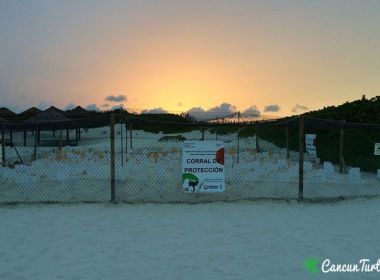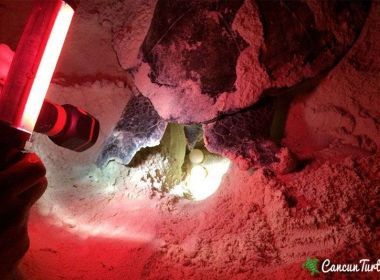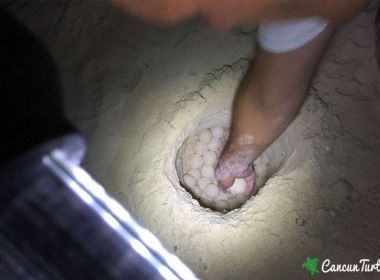About the Sea Turtle Protection Program in Cancun
Sea turtles are one of the most ancient animals on our planet. They have navigated throughout the world's oceans for 100 to 150 million years, since dinosaurs inhabited earth. From the once millions of sea turtles that roamed our oceans, today only a tiny fraction remains.
For the past few hundreds of years sea turtles have been hunted on a big scale for their meat and eggs, as well as their skin and beautiful shells reducing their numbers significantly. Destruction of their feeding grounds, marine pollution, incidental capture in commercial fishing gear and the loss of nesting areas due to coastal development additionally worsened the already tense situation. Today sea turtles are at (a high) risk to become extinct in the wild in the near future.
Sea Turtles play an important role in marine ecosystems. They help maintain the health of coral reefs and sea grass beds. Additionally their shells offer an ideal habitat for numerous marine animals and plants. Oceans without sea turtles therefore aren’t only a very sad outlook, but also will have significant effects on marine life in general.
To protect sea turtles and their habitats as well as educate the public, several conservation programs worldwide try to stop the further decline in sea turtle populations. Here in Cancun the Department of Ecology of the Municipality of Benito Juarez, to which the beaches in and around Cancun belong, launched years ago the “Sea Turtle Protection and Management Program” (“Programa de Protección y Manejo de Tortugas Marinas) – as the budget is tight and the manpower to watch over around 45 km (30 mile) beach is scarce, beach front hotels in the area are invited to participate in this sea turtle guardian program.
Of the seven sea turtle species existing worldwide, six nest on Mexican beaches, four here in the Mexican state of Quintana Roo: the Green Sea Turtle, the Loggerhead Sea Turtle, the Hawksbill Sea Turtle and the Leatherback Sea Turtle. Every year from May to September in the evening and night hours female sea turtles land on the extensive beaches of the area looking for a suitable place to lay their eggs. Once a proper place is found, “mom” digs a hole in the sand and lays her eggs. She then covers the nest with sand. Leaving the eggs to be bred by the warm sand, she returns to the sea.
As at day time the beach is frequented by sunbathers, water sports enthusiasts and sand castle builders, the well-camouflaged nests are in danger of being destroyed. Coordinating with the Department of Ecology, specially trained volunteers of the in the sea turtle protection program participating hotels patrol the beach a night looking for nesting sea turtles and educating the general public on how to behave (Please listen to what the volunteers have to say).
Once a sea turtle starts laying her eggs, the volunteers carefully remove them from the nest and relocate the eggs to a from the hotel beforehand prepared, well protected hatching area called corral. Here a little bit off the beaten beach track the eggs can develop without danger and hatch after approx. 50 to 60 days. Then the tiny hatchlings are aided along the beach to the ocean and released.
Participating hotels usually welcome their guests to watch the arrival of the sea turtles and the egg laying process as well as the release of the tiny baby turtles and their sometimes difficult way along the beach to the liberating waves.
If you are in Cancun or the Riviera Maya during sea turtle nesting season and plan on having a romantic walk on the beach in the evening or want to watch nesting sea turtles, please read our guidelines carefully and follow the few simple rules!







